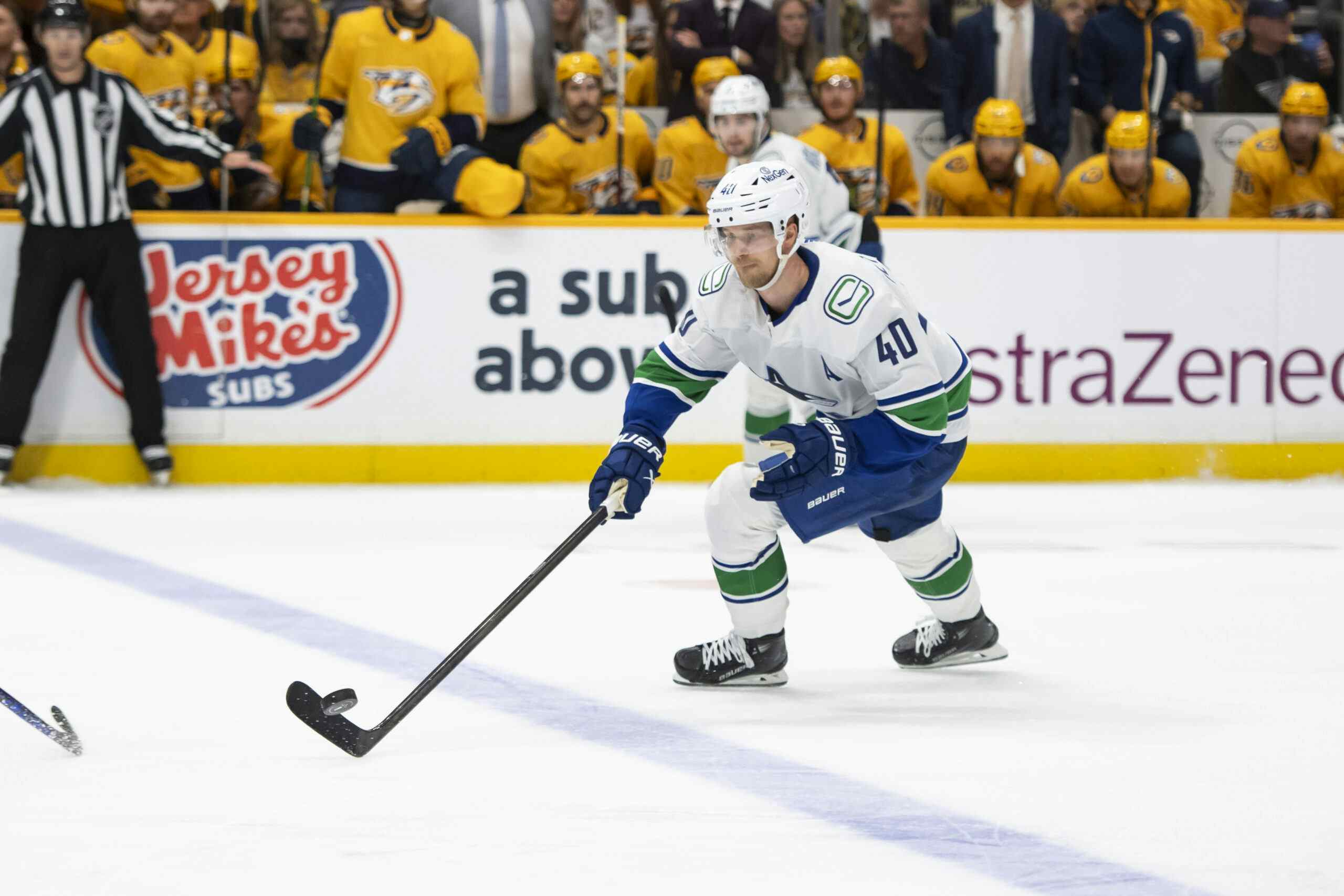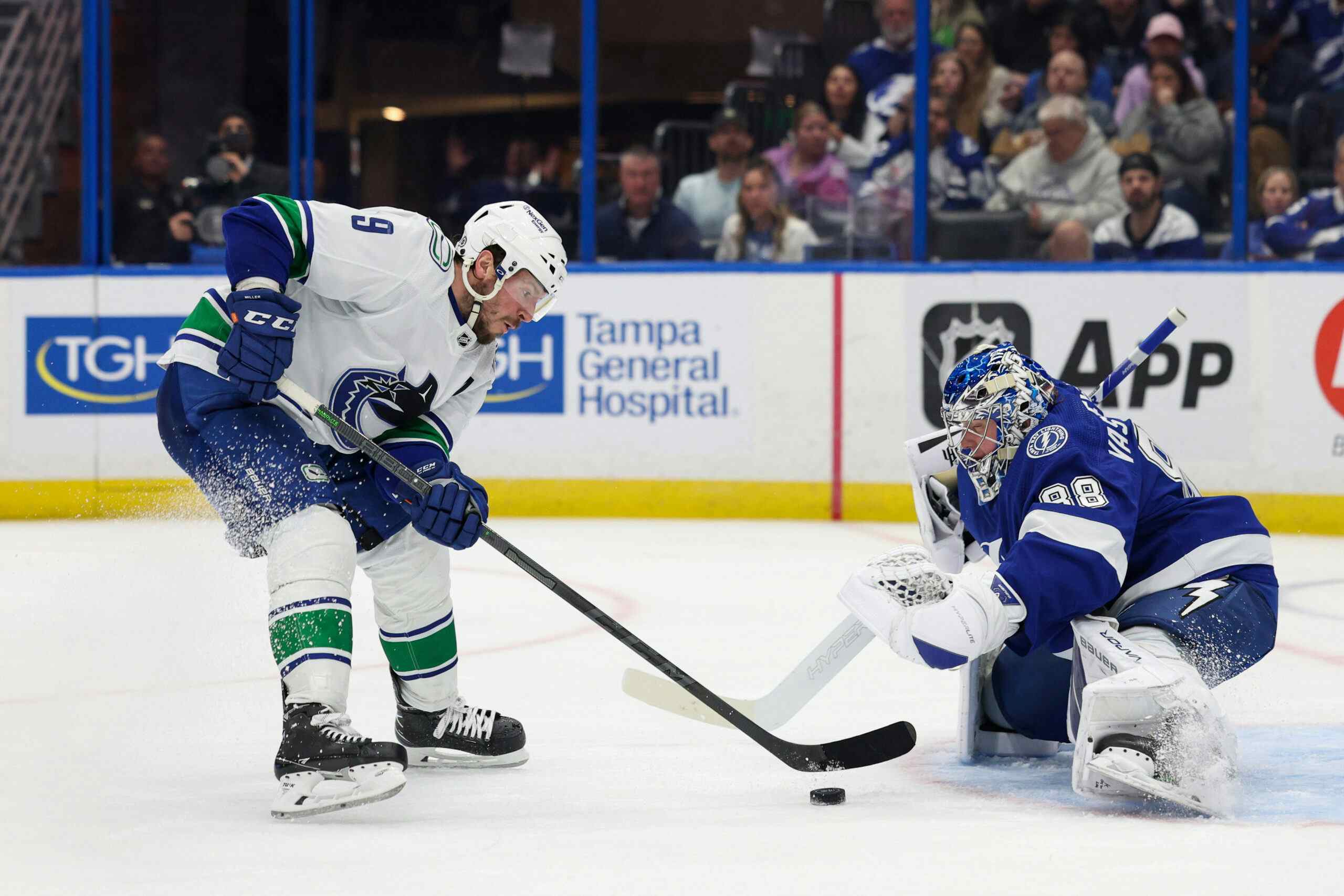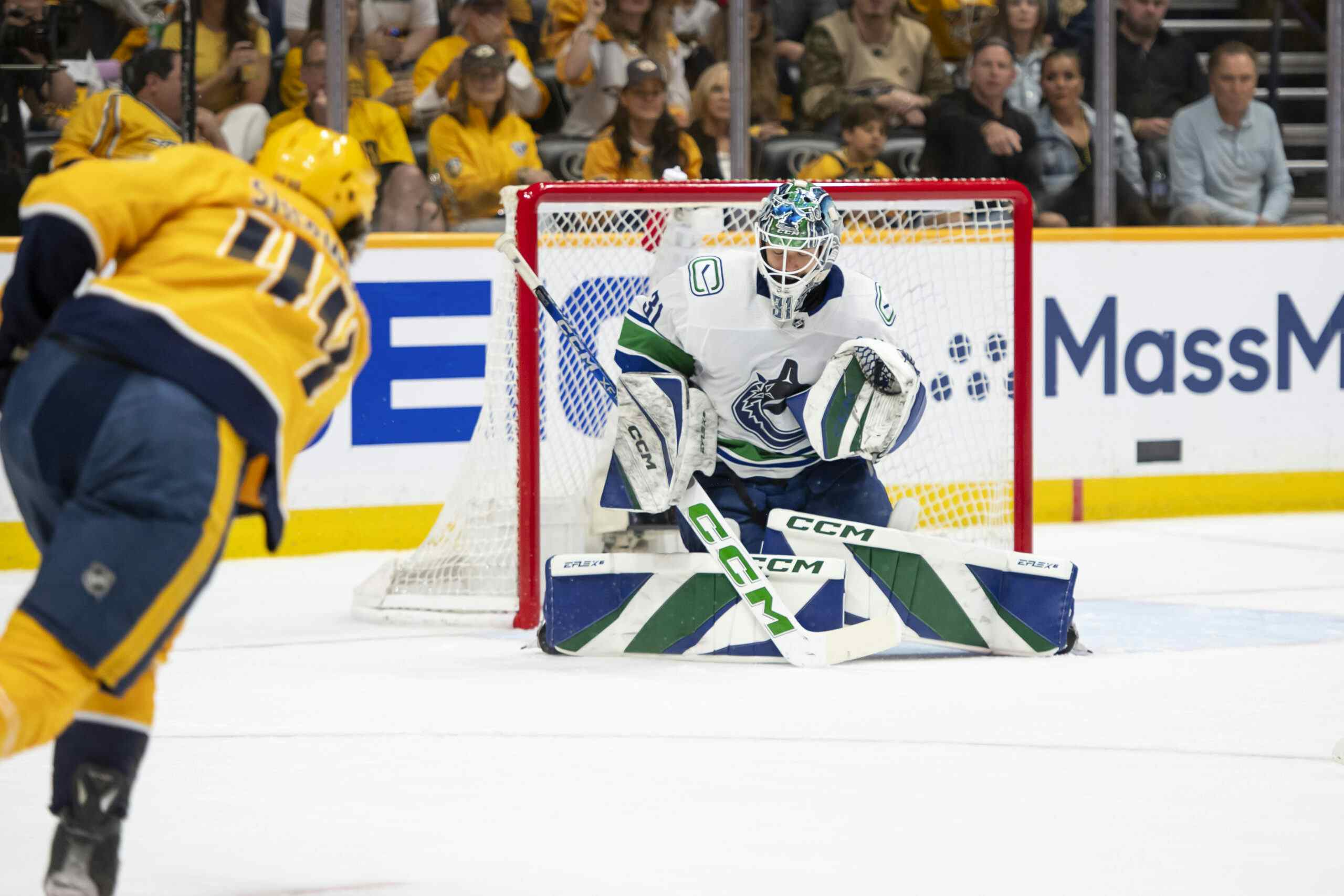Brandon Sutter Is Ill-Suited In Current Role
7 years ago
Few players confound the mind the way Brandon Sutter does. Year after year, Sutter appears to be making an impact at both ends of the ice, and year after year, his underlying metrics paint an entirely different picture. Since his first full season in 2009-2010, Sutter’s posted respectable raw counting totals, with paltry rate stats and shot metrics.
2016 has been no different for Sutter, who’s currently on pace to best his career best of 40 in a season. Sutter’s performance comes with a pair of caveats, though. First, a large chunk of that offence is coming by way of secondary assists, which players have limited control over and are highly volatile. Second, Sutter’s breakout offensive performance is having a significant negative impact on his line’s solvency at even-strength.
For the better part of a year now, I’ve been willing to give this experiment a shot. But it’s time to face facts: this just isn’t working.

Since 2008, the Sedins have skated for over 100 minutes of TOI with 13 different wingers. With 12 of those wingers, their line has been above 51% in shot shares. The current line combination with Brandon Sutter is currently sitting at just under 47 and a half percent, four percentage points clear of the next worse linemate, Steve Bernier. The Sedins and Brandon Sutter have been Vancouver’s worst top line by shot shares of the behind the net era, and it’s not close. That is, in a word, bad. And it looks even worse when you include line combinations that don’t feature a Sedin.

So far this season, the Canucks are getting outshot by a larger margin with their first line on the ice than their third line was getting outshot in 2011. Yes, the team’s quality has rapidly deteriorated since then, but no matter how highly you think of the 2011 team, there’s no reason that even the 2016 incarnation of the Sedin twins shouldn’t be outperforming Manny Malhotra and Raffi Torres.
And before you go blaming this on age related decline, consider that Brandon Sutter is the Canucks’ single worst player by even-strength shot-attempt metrics currently on the roster, and that’s including the over 170 minutes he’s played with Henrik and Daniel at 5-on-5.
He’s also had a negative effect on the twins’ individual point production. Both Henrik and Daniel have produced about 0.8 more points per 60 minutes of ice time with Loui Eriksson, while Jannik Hansen has had a positive impact on Daniel’s point production, and a slightly negative impact on Henrik during their brief time together this season. It’s also worth noting that with the twins, both Jannik Hansen and Loui Eriksson have produced significantly more P/60 than Sutter has.
So, we’ve established that Sutter with the Sedin twins isn’t really working at evens, but what about the powerplay? Sutter’s a strong, right-handed shot, surely his skill set must be helping the Canucks produce at 5-on-4.
Well, not exactly. It’s more or less the same story. Since the beginning of the behind the net era, only Steve Bernier has been a worse contributor of offense playing with Henrik and Daniel at 5-on-4. He’s also had the third-worst impact on their individual scoring rates, behind Bernier and Pavol Demitra. It’s an issue that extends back before his time in Vancouver. Over 200 skaters have had more than 500 minutes of ice-time with the man advantage since Sutter’s first full season, and in that period of time Sutter ranks in the bottom 25% in individual P/60.
While Sutter’s always been a better player by the eye test than by underlying metrics, simply watching him play with Henrik and Daniel can reveal a lot about why Brandon Sutter isn’t a good fit on that line. At first glance, the decision to put him there makes a weird sort of sense. He may be a natural centre, but he’sgot an enviable set of inputs. As a right-handed shot who’s shown half-decent goal-scoring ability, he has the speed to give the Sedins the added option of dumping and chasing when entering the offensive zone. That’s more or less the same skill set that’s made Jannik Hansen so successful with them. But Sutter’s lacking in the one obvious element that made that line so effective: the ability to contribute to the cycle.
Oftentimes, when you watch Henrik and Daniel try to create offense in the opponent’s zone, Sutter gets left completely out of the equation while the two of them move the puck back and forth and cycle around the net. While Sutter may give the Sedins’ ability to score off the rush a slight bump, he’s hindering their ability to produce offense when they have zone time, which is by far the duo’s biggest strength. It’s also something that Loui Eriksson could help with, in spite of the way he’s struggled at times this season.

Placing Brandon Sutter in Jannik Hansen’s stead has proved to be, at best, a pale imitation. The Canucks would likely be much better served placing Loui Eriksson on that line until Hansen is able to return. It’s clear the arrangement isn’t benefiting any party, particularly Sutter. The line he centred with Markus Granlund and Jannik Hansen was actually performing well above expectations before Willie Desjardins broke it up, hovering around a 50.5% Corsi For.
The Canucks ostensible second line at the moment of Chaput, Eriksson, and Granlund has been getting their teeth kicked in at even strength, so it’s not as though mixing up the lines couldn’t be of more benefit to the team as a whole. If Willie Desjardins were to base his top-nine solely off which lines had performed best in terms of even-strength shot-share percentage, it would look like this (once Jannik Hansen returns):
| Daniel Sedin | Henrik Sedin | Loui Eriksson |
| Sven Baertschi | Bo Horvat | Alex Burrows |
| Markus Granlund | Brandon Sutter | Jannik Hansen |
This configuration seems like common sense. The Canucks signed a former 30-goal scorer supposedly to play RW on their top line, and are playing a defensive centre in his stead. Considering the fact that Sutter’s actually done a better job of keeping his head above water on another line, that seems borderline insane.
Playing Sutter at wing makes a large portion of his skill set redundant, diminishing his defensive responsibilities as well as eliminating the need for him to take face-offs. We can quibble about whether or not Sutter is overpaid, or if his underlying numbers suggest better options might have been available at a fraction of the cost, but the fact remains that Sutter was brought in to fill a specific role, and thus far he hasn’t been deployed in a manner that’s consistent with that role. If the team truly wants to compete this season, they need to be putting players in a position to succeed. With Brandon Sutter, that simply hasn’t been the case.





